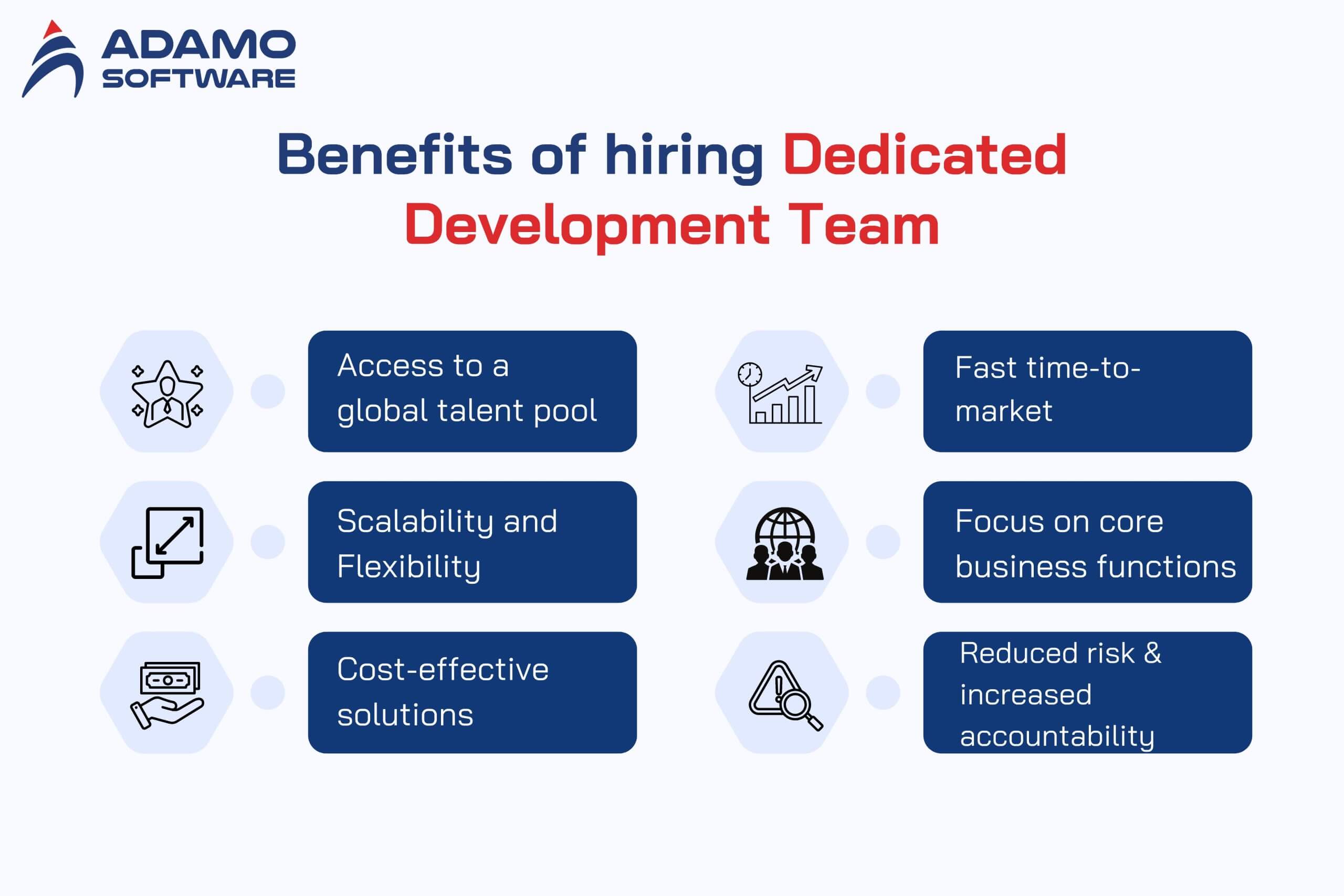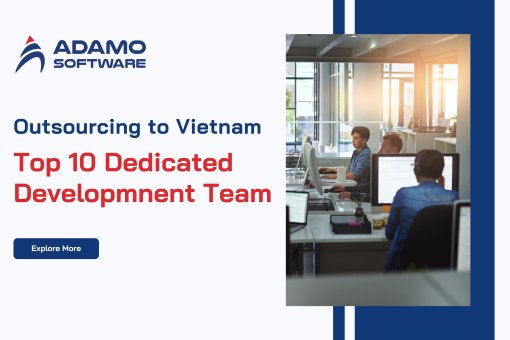Advantages of team as a service: Why not just use own in-house team?

The team as a Service (TaaS) has become an attractive and efficient way of providing additional value to project development. It is more advantageous than the conventional in-house hiring style. Since it enables accessibility to a pool of talented professionals who can easily join an example existing project. This model allows direct control over the personnel. It also provides specialized skills that might be difficult to source locally. There are faster outcomes than taking time to hire the in-house team. Therefore, this makes TaaS a suitable business model for the current environment.
Furthermore, a team as a service can deliver solutions to address particular project requirements. Suppose a company needs short-term help or constant collaboration during a few years of strategic plans. In that case, TaaS allows access to the best talents worldwide without filling in the proper full-time employees. Besides, this model is affordable compared to internal teams because it lacks overhead costs, including recruitment, training, and staff compensation. Flexibility and affordability are the reasons why TaaS should be adopted. It helps organizations keep up with the ever-changing market and offer their customers and clients new solutions.
The advantages of team as a service are economic and in other ways. With TaaS, companies can concentrate on their business strategies and what they do best while outsourcing the technical work. This increases the rate of work and guarantees the quality of the result. The TaaS teams consist of highly qualified specialists focused on different activities within this area. The TaaS model becomes more important for businesses by exploring these opportunities. Due to increased operational efficiency and the ability to expand the scale, which is vital in the modern world.
I. Top advantages of team as a service
TaaS (Team as a Service) is a new concept that allows organizations to call on a specific subject-matter team to execute their projects. This model holds many advantages for employing staff. It makes companies smarter and more efficient than hiring internally.

1. Access to a global talent pool
Scalable, skilled human capital is one of the major advantages of team as a service. Since businesses don’t have to go through the hiring cycle with its associated time and costs. TaaS also solves the problem of finding niche professionals. The TaaS provider provides the formulated, ready team with the required specialization in the project. Therefore, companies can commence their projects right from a talent pool. And they already accomplished current technologies and industry standards.
This is the advantage that goes in favor of businesses. It guarantees that they receive their correct output quality from the time the machine is set up. Companies can save time when training a team, meaning efficiency and shorter development time. To enhance this, companies state their project aims and abilities needed to have an appropriate crew for the company’s needs.
2. Flexibility and scalability
The other benefit is that it is extensible. TaaS is also free from the limitations of the company’s workforce as an in-house team. Besides, businesses can scale team size up or down about projects. For example, if a project requires more capacity or the plan is altered, companies can add more people to their teams, though not through conventional recruiting. At the same time, if the work rate decreases, it is equally easy to minimize the team’s number of people.
The concept of scalability and flexibility helps businesses to be adaptable to any change in the market. Companies can scale the size of their team depending on how their project is progressing. Thus, they only must incur charges for what they are using. This is especially helpful for companies that work on projects with fluctuating requirements, as it is cheaper without penalizing performance.
3. Cost-effective solutions
The greatest benefit of a team as a service is its cost-effectiveness. Typically, the traditional method of hiring in-house employees includes employee benefits, training, and workspace expenses. But with TaaS, companies can only be charged for the work they wish and those they require instances. You don’t have to worry about long-term employee pay, building and maintaining more locations – a chief concern regarding overhead costs.
It assists businesses in effectively determining how to best utilize their available resources. Since they would have budgeted for the software cost. They can channel their funds in areas such as marketing, product development, or customer care. To derive the maximum amount of cost-saving mechanism, many firms must cooperate with their TaaS provider on clearly outlining the tasks within a given amount of time. They also need to prevent undesired costs and maintain an optimal level of financial management on the project.
4. Fast time-to-market
Another important benefit of a TaaS is the level of acceleration of the project as a whole. TaaS teams are prepared to start a given project at any time. This allows organizations to create their projects quicker than the conventional in-house system. Companies will not experience slowdowns because of hiring, onboarding, or training. This faster execution enables a business to get its products or services out into the market sector ahead of rivals.
For the businessman, this is crucial because first-to-market is important. TaaS provides companies with the information needed to give customers what they want by doing so at incredible speed. Hence, it provides a competitive edge. To fully realize this benefit, companies involved in the adoption of TaaS must be sure to have well-defined project objectives and timelines.
5. Focus on Core Business Functions
Another of the advantages of team as a service is to bring attention to the most important functional activities. This way, companies can save time for their internal team to focus on values closer to the business. They can concentrate on customer service, planning, or product development. At the same time, they can outsource technical/specialized tasks to the TaaS provider. This helps companies become more efficient than being involved in managing their core functions and complicated projects.
This benefit assists firms in enhancing their cumulative efficiency. Organizations must offload peripheral tasks to the TaaS provider and let their teams concentrate on value-creation initiatives. Thus, there should be proper communication so that both partners can function in the same direction.
6. Reduced Risk and Increased Accountability
Another important benefit of the team as a service is its comparative safety. The management and performance of the entire team are on the TaaS provider. The business is then offloaded from such responsibility. These are coordinating the timing of important deliverables, overseeing the consistency of the work produced quality, and handling conflicts that may happen. Instead of a project failing, the provider is responsible and answerable for meeting the expectations.
For businesses, this kind of accountability means better project flow and less interruption. When engaging a TaaS provider, companies can reduce the amount spent on managing project details. Because the provider takes care of the specifics. To fully realize this benefit, there is a need for proper contracts. It helps TaaS providers define what and when it is to be delivered. A proper contract also helps to define how the performance of the service will be evaluated.
The advantages of team as a service demonstrate how the model enables organizations to run leaner, cheaper, and more efficiently while delivering the highest quality.
Also read: Team as a service (TaaS): Full guide about this modern hiring model
II. The important characteristics of the team as a service model
The proposed Team as a Service (TaaS) delivers several important distinguishing factors compared to conventional in-house teams. These features are intended to provide efficiency, agility, and competitive cost to the companies so that they can concentrate on their core competencies.
- Cohesion and collaboration: TaaS defines teams that are already in place and have a high level of synergy within them. These means create more effective communication, quicker decision-making, and improved cooperation. This can halve organizational timetables and enhance outcomes. This is one of the many advantages of team as a service.
- Expertise and specialization: Experienced professionals who hail from different fields and provide their expertise on a project-by-project basis. This implies that businesses can acquire services prepared at a higher level. These services often come with local expertise that may be difficult to find locally. As a result, companies can access better-quality services and solutions.
- Scalability: Another one is flexibility regarding the number of workers that can be employed. Should the project’s size be changed, this is one of the key advantages of team as a service. Since companies can adjust quickly to demands without the hurdles of hiring and training.
- Cost-efficiency: When selecting the TaaS model of organizing operations, companies pay for necessary services or projects. However, they do not have to pay full-time wages and other benefits. This is one of the major advantages of team as a service because it is cheaper than a regular hiring process.
- Responsibility and management: Managing the team, load management, and other logistics fall to the TaaS provider so internal resources are spared. This means companies could concentrate on the organizational functions or projects without worrying about the technical details. This can be one of the major advantages of a team as a service.
These features explain why a team-as-a-service model is gaining demand among employers requiring flexibility, professional services, and affordable prices.
III. What are the differences between TaaS and in-house hiring?
The distinctions between Team as a Service (TaaS) and in-house staffing are clear. Especially in how organizations adapt to talent procurement, handling, and work delivery mechanisms. This knowledge will enable firms to select the most suitable model depending on their choice and objectives.
| Aspect | Team as a Service (TaaS) | In-house Hiring | Additional Notes |
| Talent Acquisition | Immediate access to pre-formed, skilled teams. | Lengthy recruitment process that can delay projects. | TaaS reduces hiring time significantly. |
| Cost Structure | Project-based or service-based payments, with no long-term commitments. | Long-term costs like salaries, benefits, and training expenses. | TaaS minimizes fixed costs and overheads. |
| Scalability | Easily scalable based on project needs. | Scaling requires new hires or layoffs, which can be time-consuming and expensive. | TaaS offers greater flexibility and speed. |
| Management Responsibility | Managed by the TaaS provider, reducing management load for the hiring company. | The company is fully responsible for managing the team, including HR tasks and performance tracking. | TaaS frees internal resources for core tasks. |
| Access to Expertise | Provides specialized experts with immediate impact. | It may require training or external hires to gain the necessary expertise. | TaaS teams are more diverse and specialized. |
| Onboarding Time | Minimal onboarding is needed as TaaS teams are project ready. | Requires time for orientation, training, and integration into company culture. | TaaS accelerates project start-up times. |
| Resource Allocation | Flexible resource allocation, focusing only on what is needed for the project. | It requires long-term resource planning and allocation, even during downtime. | TaaS optimizes resources for specific needs. |
| Innovation and Global Reach | Access to global talent pools with innovative approaches. | Limited by local market talent availability and traditional work methods. | TaaS encourages diverse, global perspectives. |
| Commitment Level | Short- to medium-term engagement depending on the project. | Full-time, long-term employment commitment. | TaaS is ideal for companies needing flexibility. |
| Control Over Team | Less direct control over the team as the provider manages most aspects. | Full control over team decisions, culture, and processes. | In-house teams provide more tailored cultural alignment but may lack flexibility. |
| Risk Management | TaaS provider assumes many operational risks, such as team management and performance. | The hiring company is responsible for all risks, including performance and turnover. | TaaS reduces business risk and operational concerns. |
IV. Expectations about TaaS in the future
Technology and business models will change, and the future of Team as a Service (TaaS) will expand. Since this model is flexible and cost-efficient, more firms will opt for TaaS to secure their skilled personnel. These advantages of team as a service imply that more organizations will adopt this approach to managing their projects and human resources.

1. Increased demand for remote teams
With growing remote working arrangements, organizations will increasingly depend on TaaS for adaptable international employees. The freedom to hire professionals will underscore the advantages of team as a service. The limited talent shortages shall not contain business operations while working across multiple time zones.
2. Integration of advanced technologies
The future of TaaS will be even more integrated with artificial intelligence, automation, and cloud-based tools. They will further improve the productivity of the teams within TaaS. Therefore, they improve the speed and quality of work. The major advantage of team as a service is technological agility, providing businesses with solutions tailored to the current technology.
3. Cost-efficiency and scalability
TaaS will be the ultimate solution for companies seeking cost-effective alternatives for handling teams on demand. They will realize that simple cost-saving and decreased long-term commitments are crucial for firms, especially in the current cutthroat economies. This model will assist companies in expanding teams depending on the project’s demand. However, there is no need for full-time employees.
4. Widespread adoption across industries
TaaS is believed to grow far beyond the limits of tech market verticals and embrace healthcare, finance, and retail, among others. Over time, more industries consider the advantages of team as a service. They will more or less adopt the same standard operation model for organizations needing professionals in their workforce to be agile, specialized, and flexible.
All in all, the advantages of team as a service will keep expanding. This comes from the need for remote work, technological progress, and the vertical development of the organization’s cost-saving unions. This trend will transform TaaS into a basic instrument of the global business environment.
V. Adamo Software – The leading outsourcing software development in Vietnam

Adamo Software is one of the most significant outsourcing software development companies in Vietnam. We provide a dedicated development team for businesses all over the world. Adamo has highly skilled experts and offers a flexible and scalable opportunity that many firms wish to tap the advantages of team as a service. We have remained relevant in the technology sector because of the quality, timely, and affordable service delivery.
Selecting Adamo Software allows businesses to work with a team of specialists but does not require a permanent employment contract. This enables companies to gain from the experience and cost advantages associated with the team as a service strategy. Through Adamo’s arrangement, firms can stay efficient in their core activities to avoid fixed cost overheads. Hence, they can cut expenses while enjoying the versatility of hiring staff when it pleases them.
Including software development, mobile applications, or customer solutions, Adamo Software guarantees that companies fully integrate the team as a service. This way of working ensures positive results. Therefore, companies interested in success in the highly competitive environment should turn to them.











